What Foods Contain Caffeine?
For most people, drinking coffee and energy drinks is about more than flavor. It’s about caffeine.
But what if you don’t want to consume caffeine?
If you’re looking to limit your caffeine intake, you’ll probably need to do more than switch to decaf coffee. That’s because many foods and drinks contain some amount of caffeine.
In this article, I’ll go over what foods have caffeine in them.
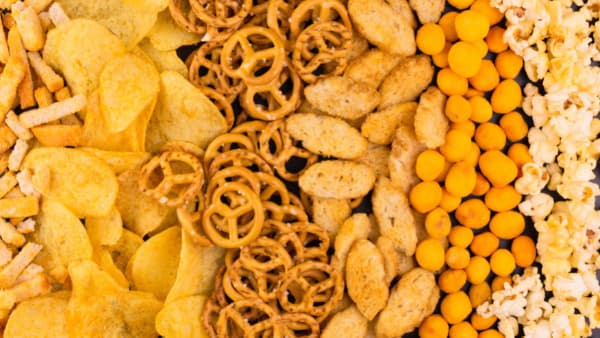
Why Watch Caffeine Content In Food
Caffeine is a stimulant that energizes the body’s central nervous system. Technically classified as a psychoactive drug, people have consumed caffeine for over 10,000 years.
Nowadays, we primarily associate caffeine with coffee beans and the tea leaves used to brew green tea and black tea. But many other plants also contain caffeine, usually in their leaves, fruits, and seeds.
Caffeine benefits plants by acting as a natural herbicide and insect repellent. For humans, caffeine can boost energy.
This energy aid can become addictive. So if you’re committed to healthy living, it’s important to watch your caffeine intake.
According to the FDA, healthy adults can safely consume up to 400 mg of caffeine per day. (That’s about four cups of regular coffee.) People who are pregnant or lactating should not consume more than 300 mg caffeine per day.
The amount of caffeine per day safe for children and teens depends on body weight. There’s not a ton of research, but some studies suggest 1.1 mg of caffeine per lb is safe.
The FDA regards these caffeine levels as “safe”. But caffeine still produces negative side effects in some people. Even when consuming less than the recommended 400 mg per day.
Caffeine can stay in your system longer than you think, affecting sleep quality. So if you struggle with insomnia, consider monitoring coffee consumption. If that’s not enough, you might need to stop snacking on dark chocolate in the late afternoon.
Too much caffeine can also contribute to increased anxiety levels.
Caffeine can also have more serious side effects. It can contribute to heart palpitations, increased blood pressure, and increased heart rate. According to a 2017 review of available data and studies, drinking too much caffeine puts you at increased risk for heart disease.
Drinking decaffeinated coffee or caffeine-free tea can help reduce your caffeine consumption. And it’s easy enough to avoid energy drinks.
But you can encounter unexpected caffeine in many foods and drinks (including coca cola!).
Once you start looking at nutrition labels, you might be surprised. You can find caffeine in everything from breakfast cereals to chewing gum.
(Quick note about comparing sources of caffeine to coffee. This article assumes one cup of coffee is 8 fl oz, containing about 100 milligrams of caffeine per 8 fl oz.)
Foods With Caffeine
1. Chocolate

Outside of coffee and tea, chocolate is likely the most commonly consumed source of dietary caffeine.
But before we can bite into a delicious slab of dark chocolate, it all starts with the cocoa bean.
Cocoa beans grow on cacao trees, native to the Amazon rainforest.
Chocolate producers dry and ferment the seeds of this tree. They then extract cocoa solids and cocoa butter. Chocolate is a combination of these cocoa substances.
Cocoa beans naturally contain caffeine. This means that all chocolate will contain some amount of caffeine.
In addition to caffeine, cocoa contains compounds that produce antioxidant and anti-inflammatory benefits. So, yes. There’s an argument that chocolate offers health benefits.
But everything in moderation, particularly when it comes to caffeine and healthy eating.
It’s easy to become addicted to the rush of energy caffeine produces. Chocolate is often the childhood introduction to caffeine.
A cup of chocolate milk or a mug of hot chocolate won’t give your kid the same buzz as would a shot of espresso. But they’re still caffeinated drinks.
Chocolate flavored foods like chocolate cake are no exception.
How much caffeine chocolate contains depends on type. The higher the cocoa content, the higher the caffeine levels.
Here’s a quick rundown of caffeine content per 100 g of chocolate.
- Milk Chocolate (33% cocoa): 45 mg caffeine per 100 g
- Dark Chocolate (55% cocoa): 124 mg caffeine per 100 g
- Unsweetened Baking Chocolate (100% cocoa): 240 mg caffeine per 100 g
- Unsweetened cocoa powder contains similar amounts of caffeine as 100% cocoa solids.
Keep in mind, 100 g is roughly twice the recommended daily serving size. The caffeine in chocolate is lower than in coffee beans.
But if you struggle with caffeine side effects, you might want to watch your chocolate consumption.
2. Kola Nut
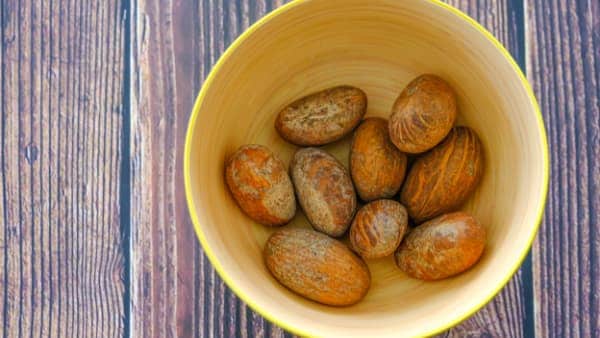
The kola nut is a staple food in West African countries, where it grows naturally on trees.
The trees grow up to 60 ft tall and produce a star-shaped fruit, each of which contains up to five kola nuts.
The seed (or “nut”) of the kola tree contains caffeine. You can eat the kola nut dried or fresh from the tree. The fresh nut has a bitter taste. Drying the nut creates a milder taste.
In the US and Europe, you’ll primarily encounter the kola nut in extract form. Manufacturers use this extract as an additive in foods and drinks.
As you might have guessed from the name, the kola nut is responsible for that distinct Coca-Cola taste. (At least, that’s the prevailing assumption. The exact Coca-Cola recipe is, of course, top secret.)
Your favorite energy drinks might also contain extract derived from the kola nut.
Heads up. Even if your energy drink doesn’t rely on that classic kola flavor, that doesn’t mean it’s caffeine free. Mountain dew and flavored iced tea (green tea or black tea) also include caffeine.
In isolation, the caffeine from kola nuts might actually have health benefits.
The FDA lists the kola nut as safe for human consumption. (The kola nut is not associated with tree nut allergies.) But sugary foods and drinks that often contain kola extract can cause health issues.
About the size of a chestnut, one kola nut contains more caffeine than two cups of coffee.
3. Guarana
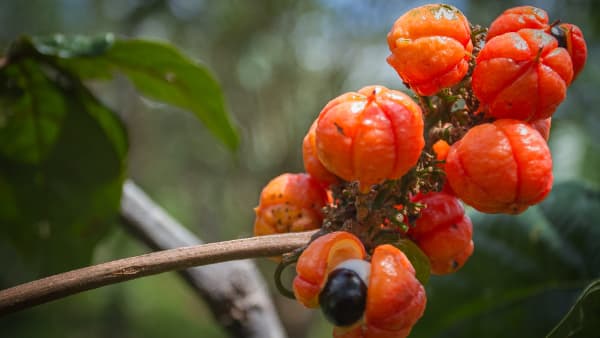
Guarana is a Brazilian plant native to the Amazon rainforest.
The extract from guarana leaves is commonly used for its natural caffeine properties. It includes additional stimulants theophylline and theobromine.
As an extract, guarana is used as a food additive. This additive increases the caffeine levels of many energy drinks and soft drinks. Energy bars also frequently contain guarana extract.
According to science, In addition to providing an energy boost, ingesting guarana seeds presents beneficial antioxidant properties. This study also suggests that It can also protect against high blood pressure and weight gain.
Guarana contains a greater amount of caffeine than coffee beans. In fact, the seeds of the guarana plant contain some of the highest concentrations of caffeine found in the natural world.
By weight, guarana contains 3.6% to 5.8% caffeine. For comparison, coffee beans contain up to 2% caffeine.
4. Chewing Gum
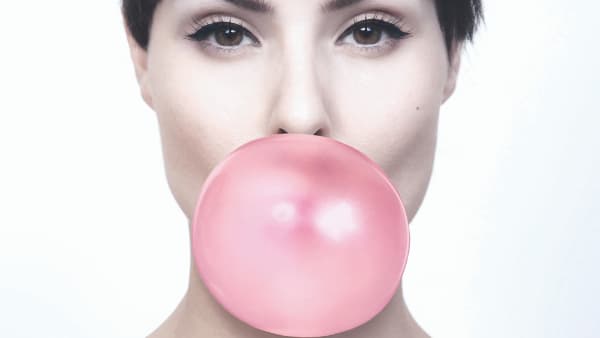
Humans have chomped on chewing gum since the Neolithic period. Originally, this rubbery substance came from birch bark tar. But in the 9,000 years since, the components of chewing gum have become complicated.
Modern day chewing gum uses polymers, plasticizers, and resin to form a gum base. The flavors and softeners use a litany of ingredients, none of which would be recognizable to the original gum chewers.
But up until recently, this mind boggling list of ingredients didn’t include caffeine.
Most chewing gum on the market is caffeine free. But some manufacturers add caffeine synthetically to give chewers a quick energy boost.
First developed for military use, caffeinated chewing gum has gained popularity with athletes.
Caffeine in any form can improve alertness and attention span. But diet-conscious athletes often use caffeinated chewing gum as an alternative to energy drinks or energy bars.
Even though you don’t swallow chewing gum, you can still absorb caffeine through your gums. This absorption means caffeine goes directly into your bloodstream.
So caffeinated chewing gum raises energy levels quicker than caffeine capsules or the remove energy drinks and bars.
Caffeinated gum comes in the same flavors as regular gum: mint, cinnamon, fruity.
Here’s a quick glance at how much caffeine popular brands contain.
- Rev Energy Gum: 100 mg caffeine per piece
- BLOCKHEAD Energy Gum: 50 mg caffeine per piece
- Vivarin Gum: 40 mg caffeine per piece
5. Desserts
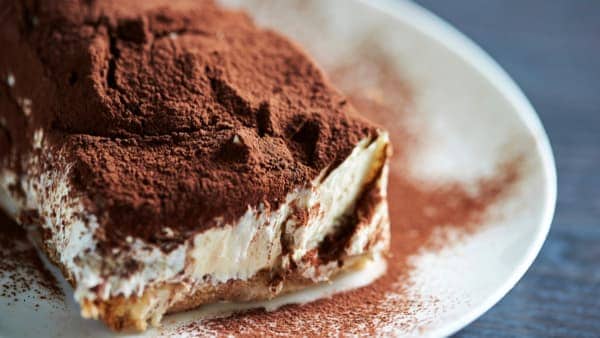
Desserts don’t automatically come with a caffeine kick. But many dessert foods and drinks do use ingredients that contain caffeine.
Look no further than such stalwarts as chocolate and coffee liqueur.
In these cases, the caffeine is a natural component of the ingredient rather than a synthetic additive.
Take for instance, tiramisu. This Italian dessert contains ladyfingers soaked in actual coffee. Not to mention a generous dose of cocoa powder.
Chocolate cake (or even a vanilla cake with chocolate frosting) will also contain caffeine. Same goes for cookies containing milk chocolate chips. And don’t forget about chocolate ice cream.
People often enjoy desserts as an after-dinner treat. So if you have trouble sleeping, consider the caffeine content of your final bites before bed.
Coffee isn’t the only culprit serving up caffeine per every bite. Matcha green tea desserts and black tea infused cakes could also keep you up at night.
A dessert’s caffeine content will depend on how much chocolate or coffee the recipe uses.
- Coffee Liqueur: 26 mg caffeine per 100 g
- Ben & Jerry’s Coffee Coffee Buzz Buzz! Ice Cream: 45 mg caffeine per ½ cup serving
- Coffee yogurt: 36 mg caffeine per 6 oz
- Hot Cocoa: 8 mg caffeine per 1 tbs

